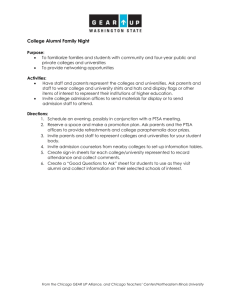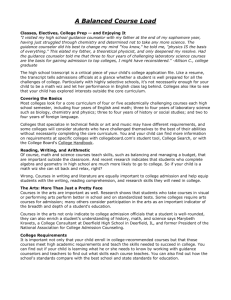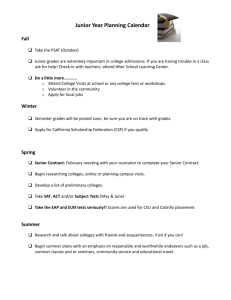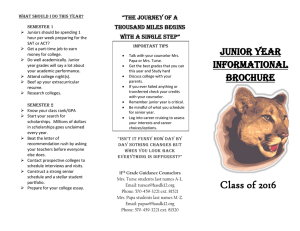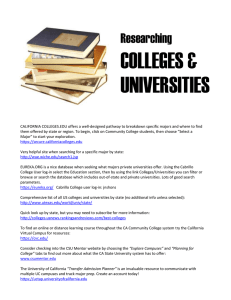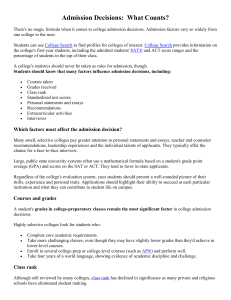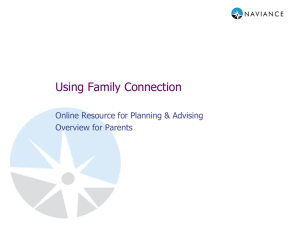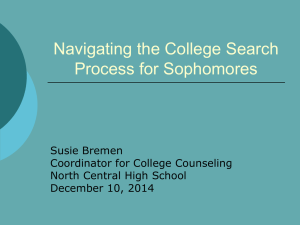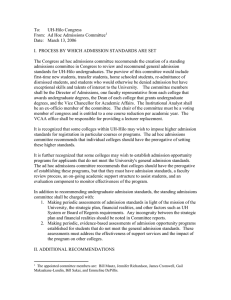Creating a Target List of Colleges Creating a
advertisement
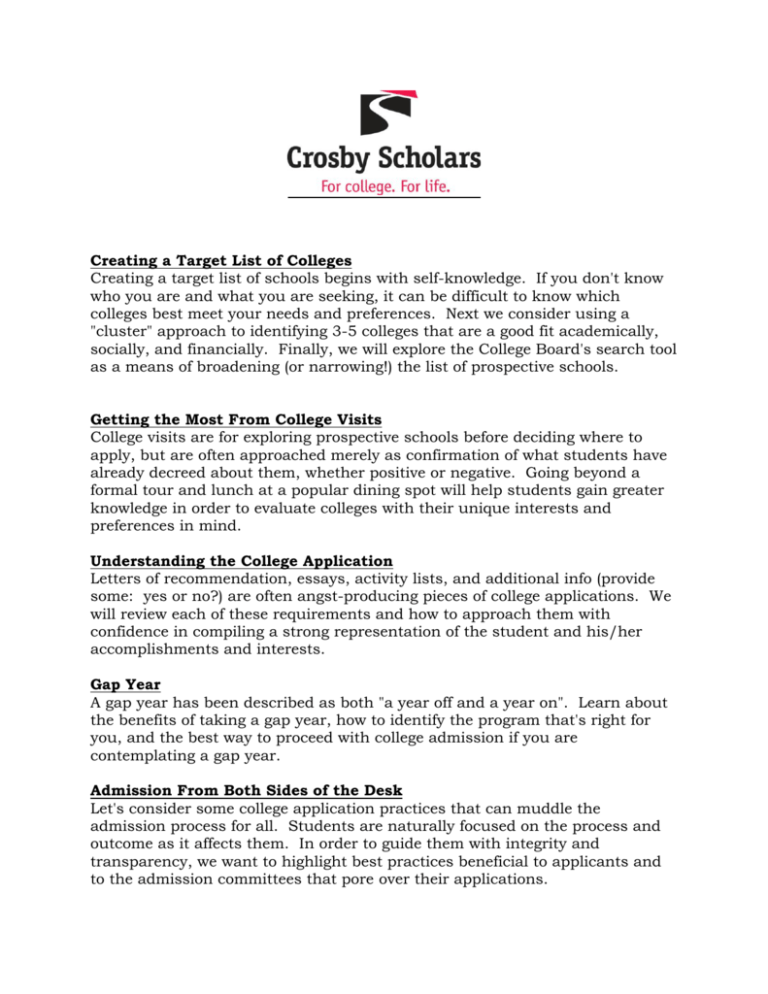
Creating a Target List of Colleges Creating a target list of schools begins with self-knowledge. If you don't know who you are and what you are seeking, it can be difficult to know which colleges best meet your needs and preferences. Next we consider using a "cluster" approach to identifying 3-5 colleges that are a good fit academically, socially, and financially. Finally, we will explore the College Board's search tool as a means of broadening (or narrowing!) the list of prospective schools. Getting the Most From College Visits College visits are for exploring prospective schools before deciding where to apply, but are often approached merely as confirmation of what students have already decreed about them, whether positive or negative. Going beyond a formal tour and lunch at a popular dining spot will help students gain greater knowledge in order to evaluate colleges with their unique interests and preferences in mind. Understanding the College Application Letters of recommendation, essays, activity lists, and additional info (provide some: yes or no?) are often angst-producing pieces of college applications. We will review each of these requirements and how to approach them with confidence in compiling a strong representation of the student and his/her accomplishments and interests. Gap Year A gap year has been described as both "a year off and a year on". Learn about the benefits of taking a gap year, how to identify the program that's right for you, and the best way to proceed with college admission if you are contemplating a gap year. Admission From Both Sides of the Desk Let's consider some college application practices that can muddle the admission process for all. Students are naturally focused on the process and outcome as it affects them. In order to guide them with integrity and transparency, we want to highlight best practices beneficial to applicants and to the admission committees that pore over their applications.
